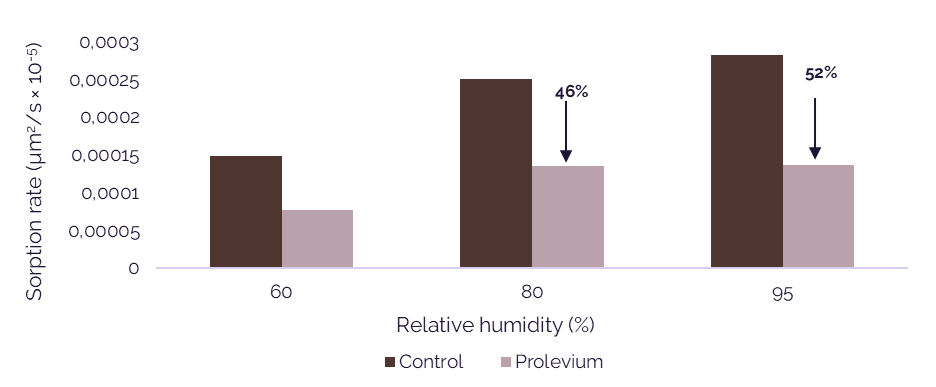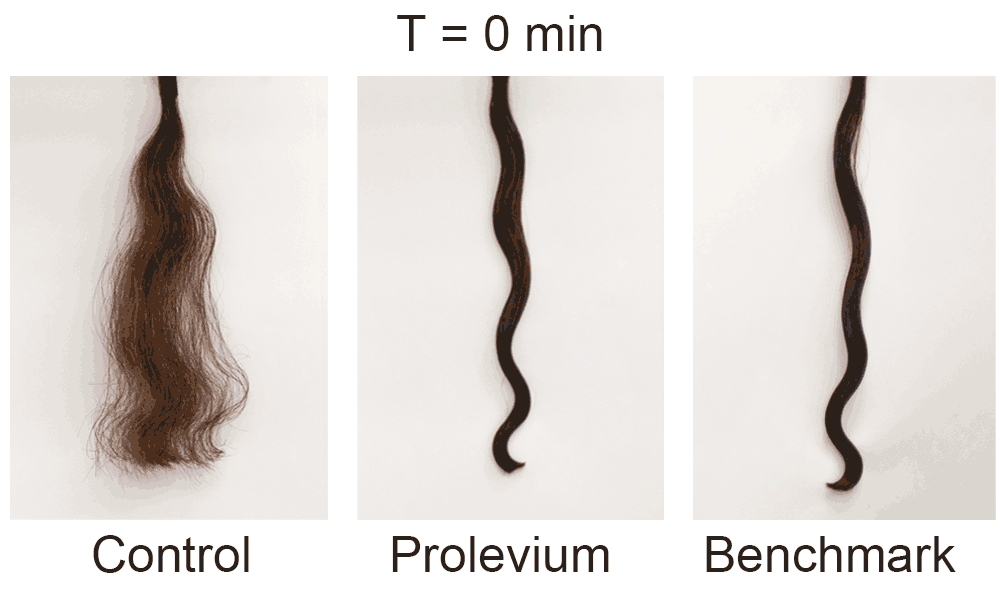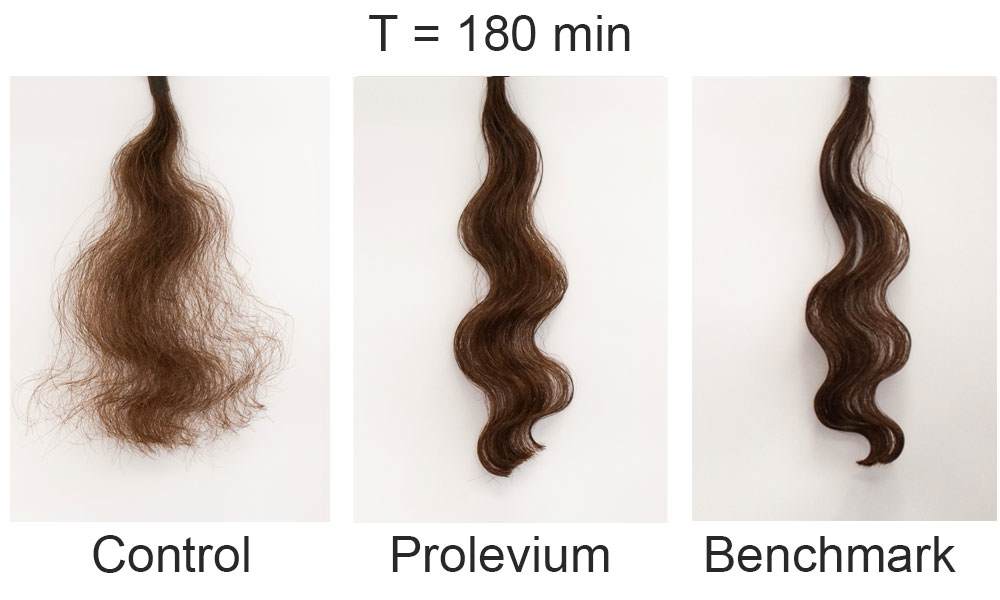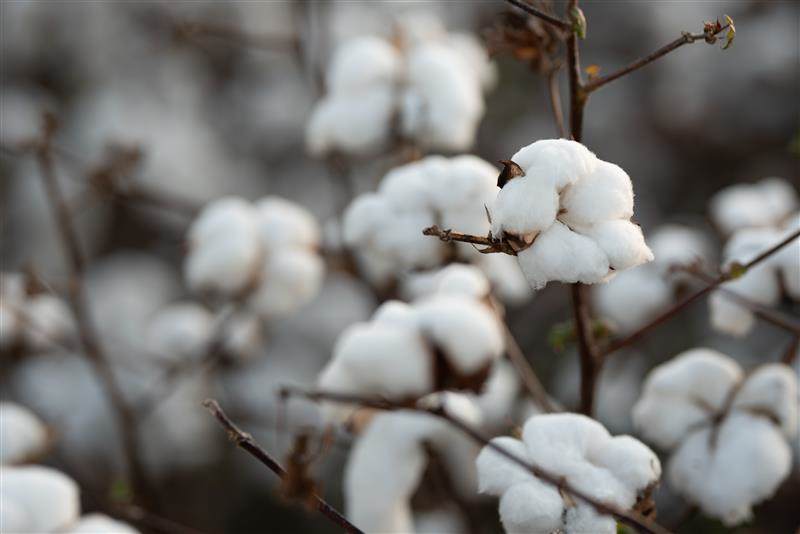Adapting to climate: Prolevium humidity control for frizz-free hair

Higher temperatures, pollution, and extreme weather conditions can all have a direct impact on hair health or aesthetics. Climate change means more humidity in places that were previously cooler as well as increased variability in humidity forcing us to rethink the way we care for our hair.
Why is the structure of our hair affected by humidity and how can it be prevented?
Already identified as a concern during summers or in tropical regions for years, the focus on frizz prevention is now wider due to the increased instability of weather conditions and more frequent variation of humidity.
But why is our hair affected by humidity?
Hair naturally absorbs water, with the absorption rate influenced by its level of damage.
When humidity increases, water molecules from the air penetrate into the hair fibre and disrupt hydrogen bonds found in the hair cortex. This leads to a change in hair’s structure, often unwanted, with the formation of frizz and undesirable volume.
Thanks in part to its low molecular weight, Prolevium™ is thought to maintain the perfect style and protect the hair from frizz through two different mechanisms:
- By penetrating into the hair fibre and providing moisture regulation in the cortex
- By forming a barrier at the surface of the hair to slow moisture entry into the hair fibre
Prolevium offers a combination of moisture-balancing and film-forming properties that work synergistically to protect our hair from humidity variation.
Water regulation in the hair fibre
Our technical team conducted a Dynamic Vapour Sorption (DVS) test to confirm the efficacy of Prolevium in balancing moisture uptake and adapting to different climates. DVS is a technique that quantifies the interaction between hair and water vapour, providing insight into the rate and quantity of water absorbed or lost from the hair fibre.
Prolevium was tested at 1% active against a placebo on virgin type 2B hair. Hair was washed, dried, treated and then left to dry overnight at room temperature. When dried, small portions of hair were placed in the DVS chamber. Humidity was then increased through five different steps in a controlled manner, in which the rate of mass change at 60%, 80% and 95% relative humidity (R.H.) points were collected.

fig. 1
It can be seen on the graph that the sorption rate is 46% lower at 80% R.H. and 52% lower at 95% R.H. when treated with Prolevium compared to the untreated control. This indicates water is penetrating the hair fibre more slowly, reducing the overall amount of water in the hair fibre and thus providing moisture regulation.
As humidity increases, Prolevium helps to regulate moisture uptake, adapting hair to extreme weather conditions, such as relative humidity reaching 95%, to limit the negative impact this can have on the structure of the hair and resultant formation of frizz.
Frizz control in action
Some types of hair, such as textured hair, are more sensitive to climate and humidity variations as the cuticle layer can’t fully prevent water from penetrating the hair. This leads to increased volume and curls that lose their definition.
Prolevium’s moisture-balancing properties were assessed in action on textured hair with frizz control evaluation of virgin type 2B hair. Images of hair treated with either a placebo solution, the same solution containing 1% active Prolevium or a styling polymer as a benchmark exposed to 80% relative humidity were captured.
Images below demonstrate Prolevium’s ability to keep hair well defined without any frizz, with performance similar to a styling polymer but without the negative feel often associated with these materials.

fig. 2

fig. 3
Michelle Effendy, one of our Lead Application Scientists based in Croda UK, commented:
“Despite no visual preference between Prolevium-treated hair and benchmark-treated hair, sensory evaluation provides some differences with Prolevium-treated hair that was soft to the touch, with low crisp feel and a natural appearance, compared with benchmark-treated hair, which felt crisp and stiff.”
Frizz control is essential for consumers who want their hair to look good at all times without being affected by climate change and humidity variations. But not at all costs! Soft hair is another key, extremely desirable property of hair, but it is often impacted by the frizz control solutions available on the market. Additional hair softness testing and sensory evaluation confirmed Prolevium preserves hair texture and aesthetics, with consumer-perceivable smooth hair and hair softness that is maintained.

Summary
The climate is changing, and so is the humidity, and fluctuations in humidity have a direct effect on the hair’s structure and style, something consumers are eager to avoid. Acting as a hair humidity-proof protein, Prolevium is the perfect asset to keep your hair well-defined whatever the weather. With frizz control and style retention properties, it leaves the hair looking and feeling beautiful, even in different climates and at extreme humidities.
Beyond its humidity control benefits, Prolevium is derived from cottonseed found in the cotton flower, a worldwide symbol of softness and comfort. It is 99% naturally derived (according to ISO 16128), vegan suitable, Halal certified, non-GMO, and free from phenoxyethanol, helping consumers to navigate through climate change and help them to cope with external aggressors with an environmentally conscious solution.
 Featured
Featured